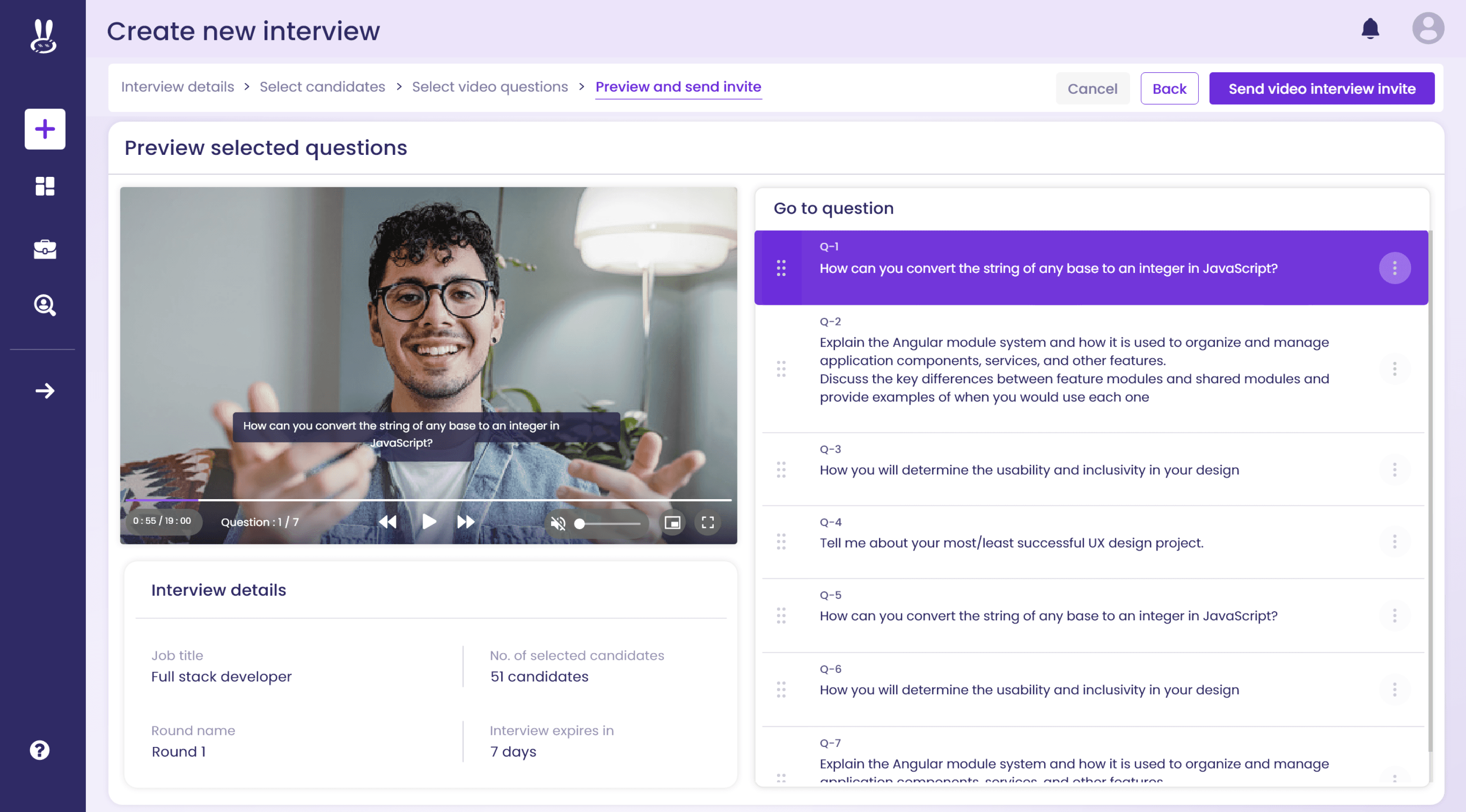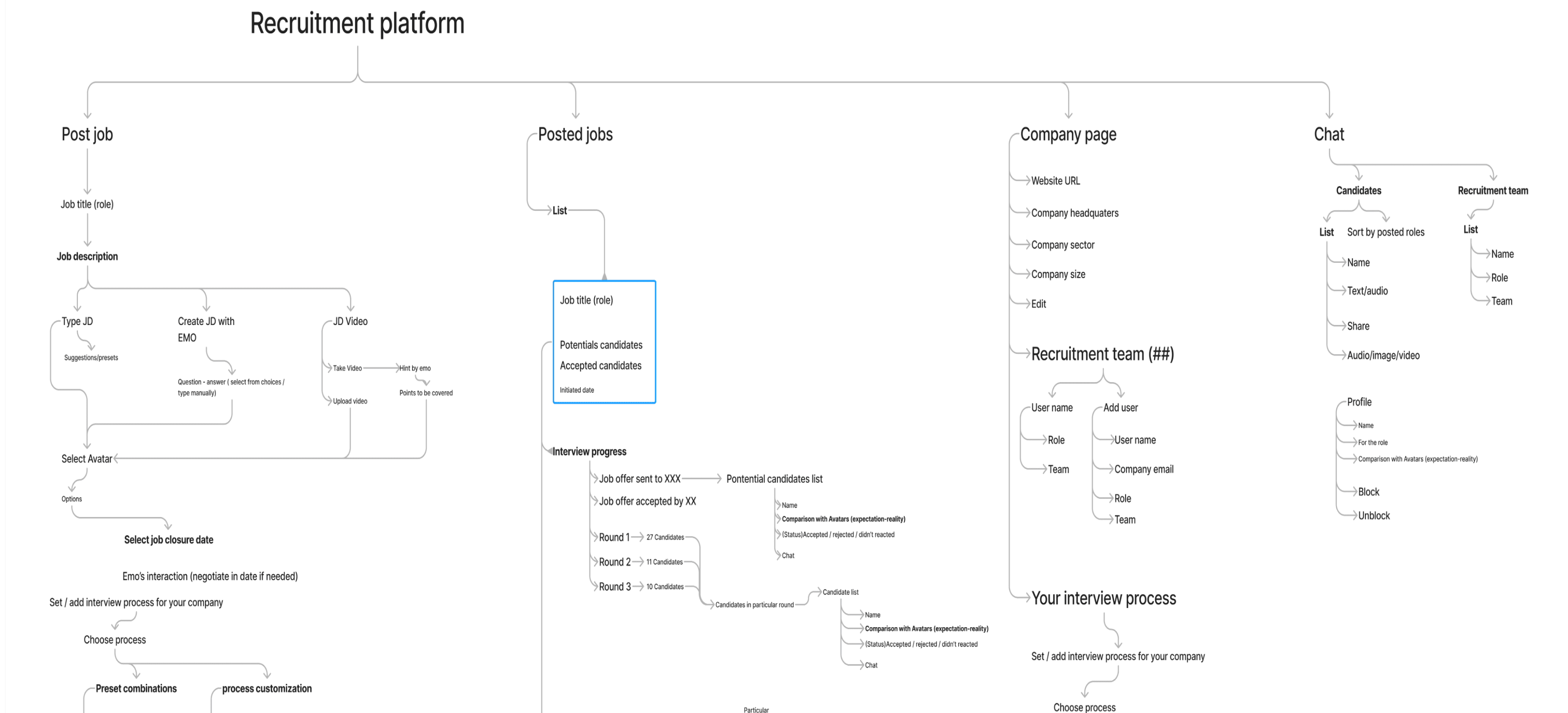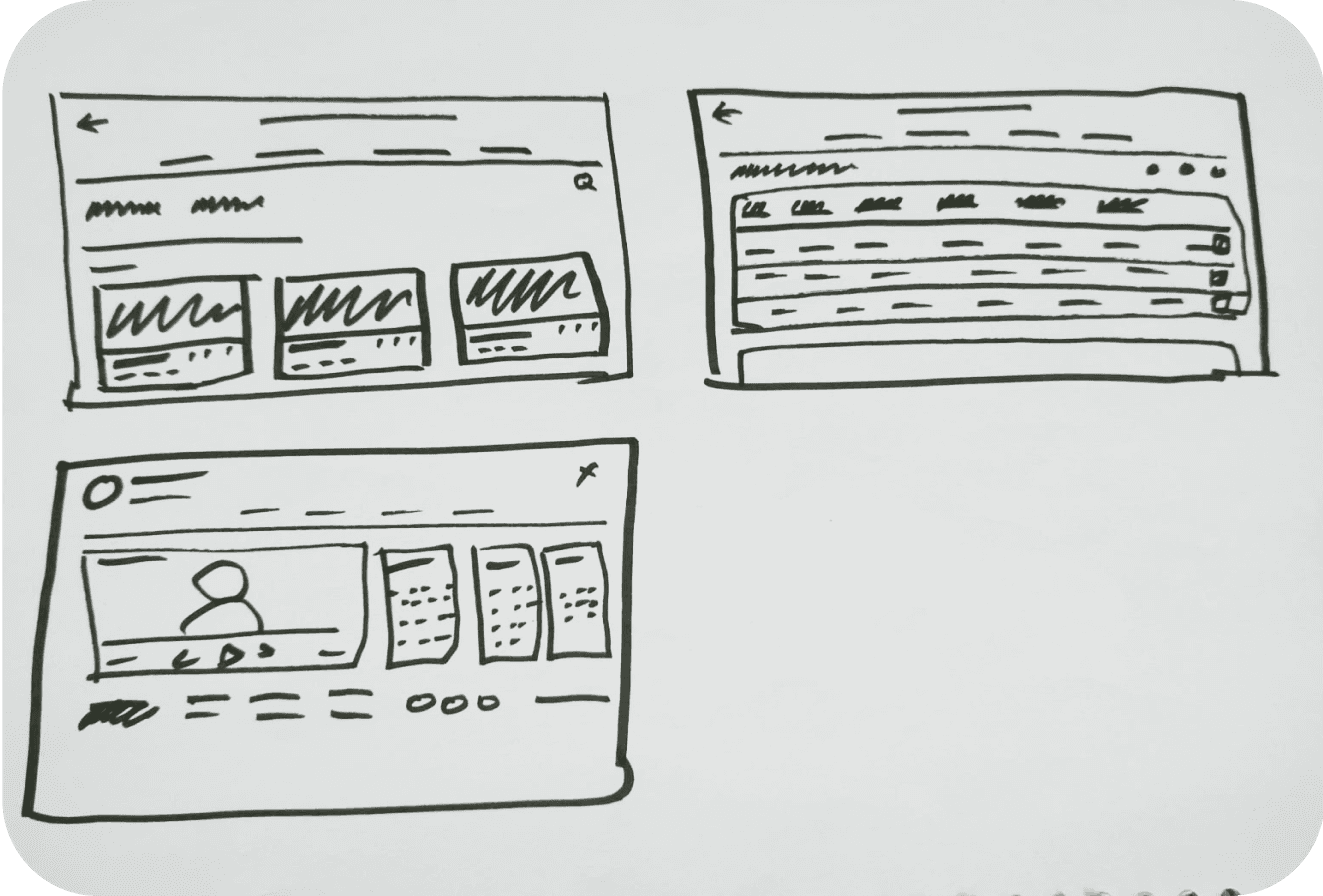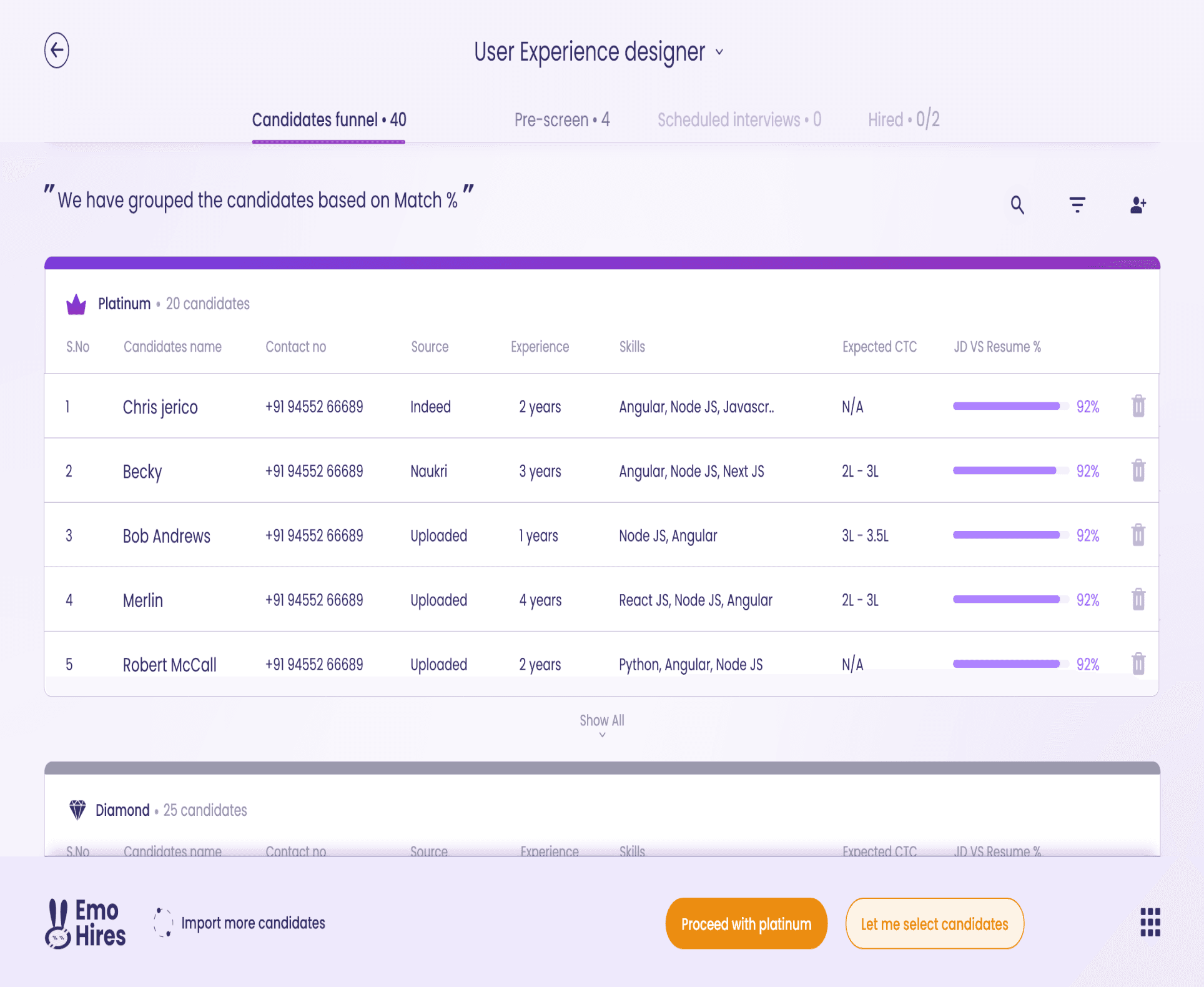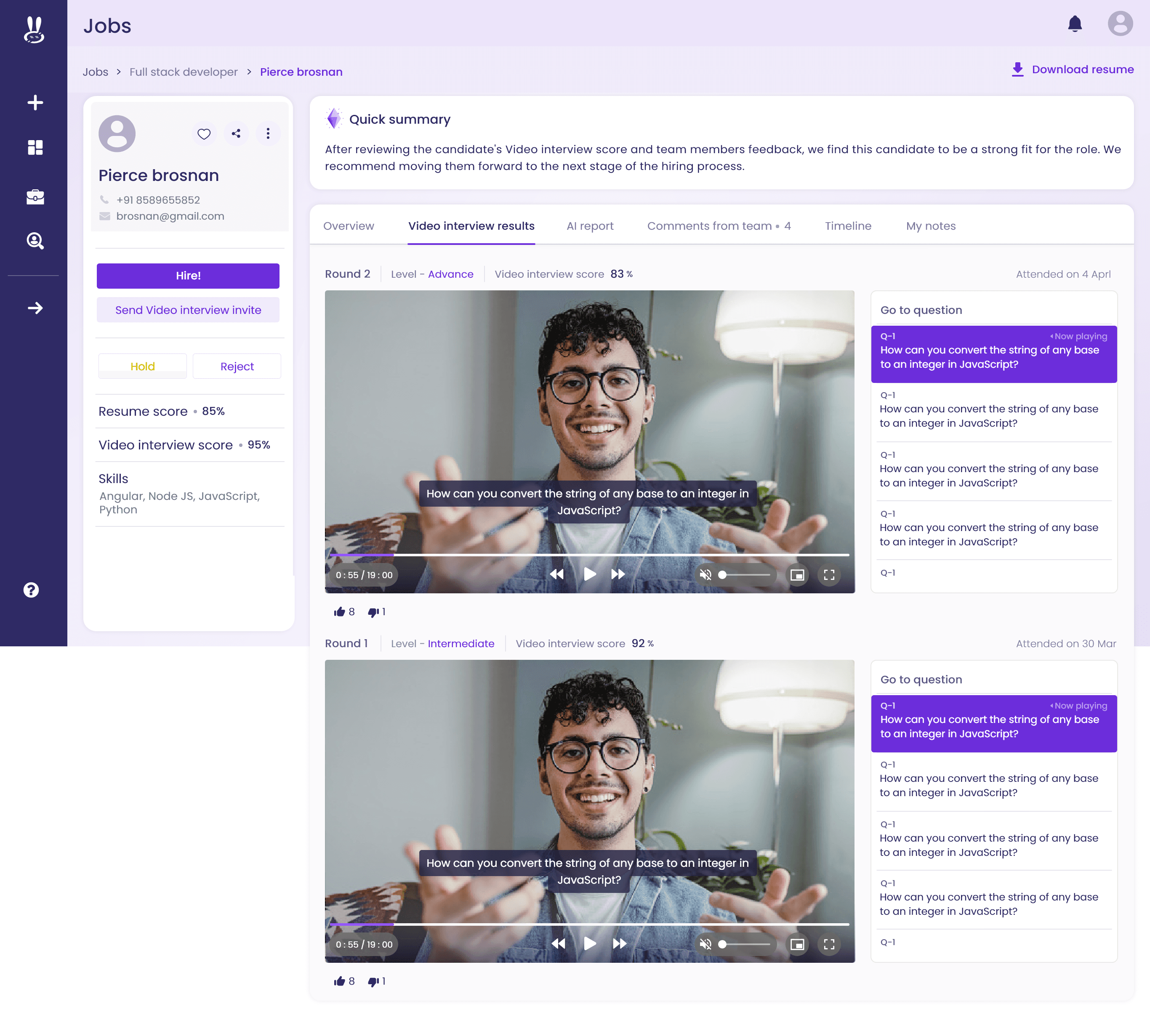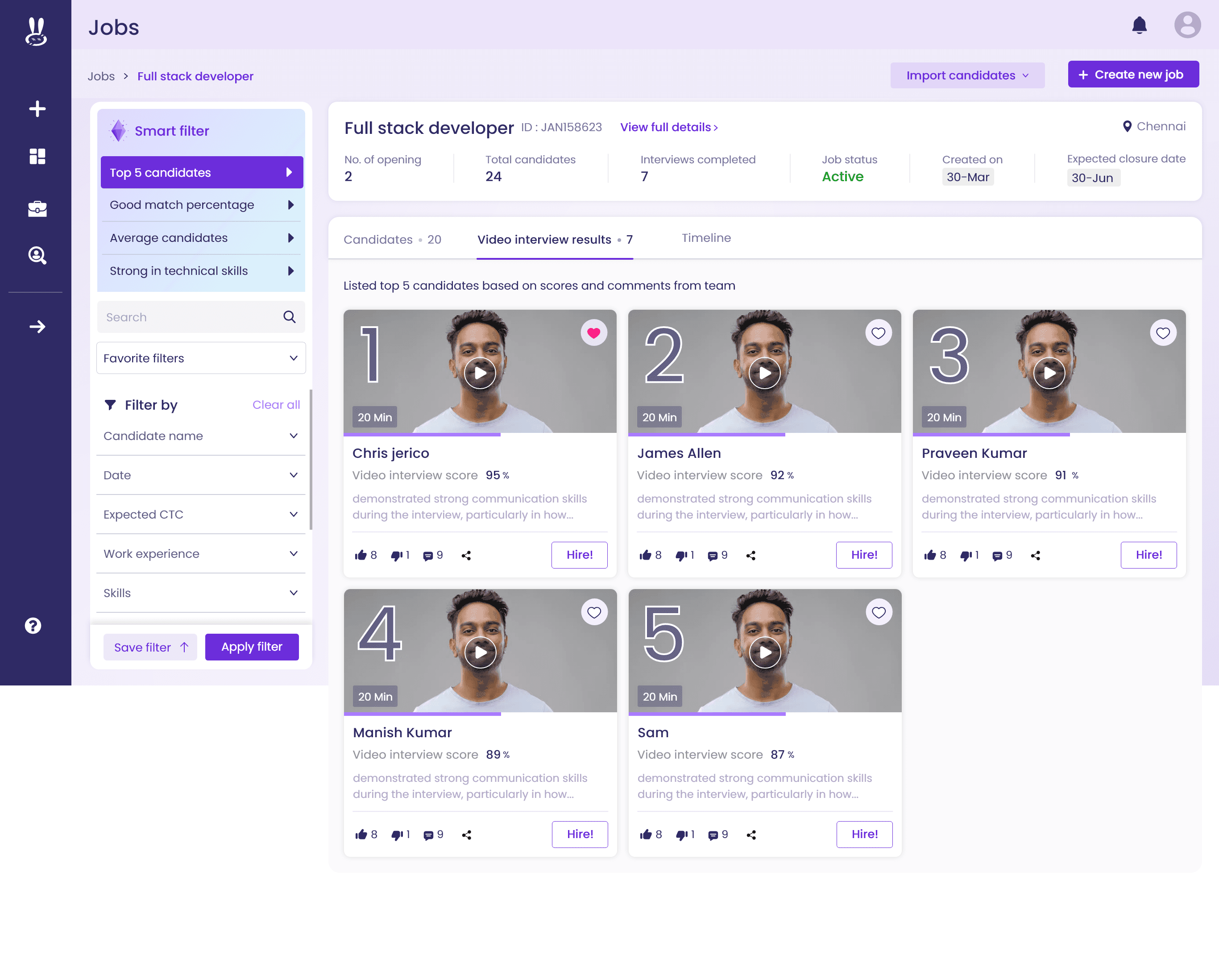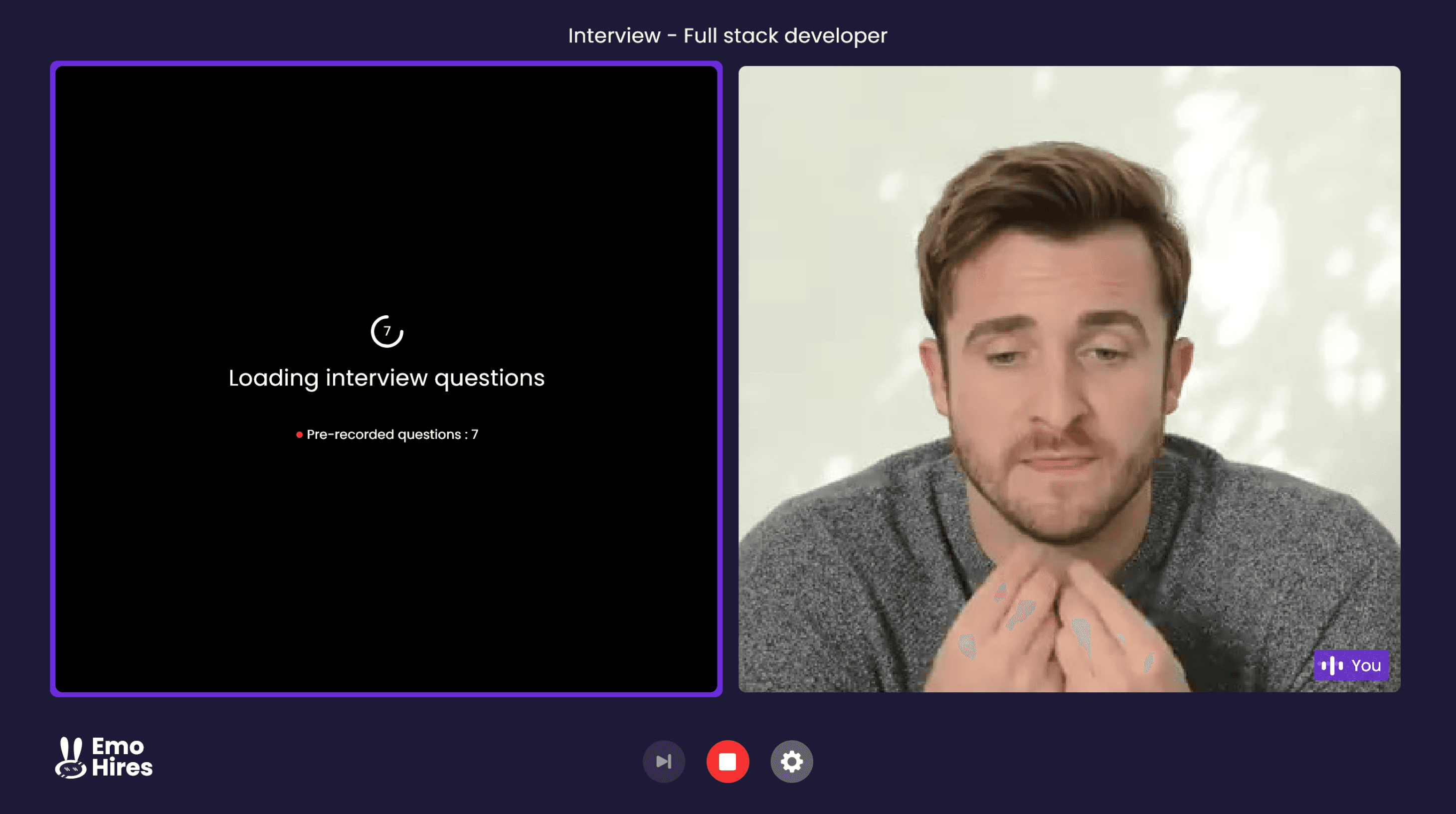Introduction
Project Summary
Transform hiring methodologies utilising artificial intelligence and video tech capabilities.
Our aim was precise to create and introduce an AI-centric video recruitment tool that not only speeds up the selection procedure but also encourages equity and transparency.
Identifying the Challenge
Challenge
HR departments struggled with maintaining high levels of employee engagement, particularly in a remote work environment. Existing tools lacked interactive and personalized engagement features, leading to decreased morale and productivity.
Project Goals
Develop a feature to enhance employee engagement.
Foster a sense of community and connection among remote workers.
Provide actionable insights to HR professionals to improve engagement strategies.
Research Phase
User Insights
Conducted in-depth interviews with remote employees and HR managers to understand their engagement challenges and needs.
Market Research
Analyzed successful engagement tools across different industries to identify key elements that could be adapted and improved.
User Research
Interviews Overview
I connected with recruiters, startup founders, and recent graduates to understand their views on hiring. They stressed the need for faster, automated candidate screening to save time and reduce bias. We also discussed concerns about biased hiring practices and stressful interviews. However, everyone agreed that automation could benefit both recruiters and candidates by making the process smoother and fairer. These conversations shaped our approach to developing an AI-powered recruitment platform.
With the knowledge of Design Thinking, understanding of the hiring process and existing hiring automation practices, I conducted a series of interviews. These interviews encompassed a diverse range of participants, including recruiters with three to twelve years of experience, startup founders, and freshers seeking employment.
User Story
In a busy city, recruiters like Deepan sift through piles of resumes every day. Deepan, a skilled recruiter, uses his own special methods to find the best candidates, looking at job titles and past successes. However, this way of working sometimes leads to unfair choices, as biases creep in.
Deepan knows there must be a better way. He uses tools like Excel, but he dreams of even smarter solutions that can take care of boring tasks, giving him more time to talk to candidates.
Meanwhile, candidates like James feel very nervous about traditional interviews. This anxiety affects their confidence and prevents them from showing their true skills. James wishes for a friendlier and less stressful interview process.
The solution is automation. By using smart technologies, Deepan imagines a future where resume screening and interview scheduling happen automatically, saving time and making everything more efficient. For candidates like James, this means quicker feedback and a more enjoyable experience.
Together, Deepan and James aim to change recruitment. They want a system that is fair, unbiased, and efficient, turning the challenging recruitment maze into a path of innovation and opportunity.
User Persona

Deepan Kumar
Deepan has been working in recruitment for a decade. He started his career in a small staffing agency and worked his way up to a senior position at TechWave Solutions, a leading tech company in Chennai. Over the years, he has developed a keen eye for spotting talent and a deep understanding of the recruitment landscape.
Technological Proficiency
Proficient in Microsoft Excel and other basic office tools
Familiar with recruitment software and applicant tracking systems (ATS)
Open to adopting new technologies that can improve recruitment efficiency
Tools and Platforms Used
Microsoft Excel
LinkedIn Recruiter
Naukri.com
Zoho Recruit (ATS)
Company’s internal HR management system
Professional Goals
Streamline the recruitment process to save time and increase efficiency
Reduce bias in candidate selection to ensure a fair hiring process
Implement new technologies to improve recruitment outcomes
Build a strong talent pipeline to support the company's growth
Challenges
Managing a high volume of resumes and applications manually
Ensuring an unbiased and fair selection process
Keeping up with the latest recruitment technologies and trends
Reducing the stress and anxiety candidates feel during the interview process
Goals for Improvement
Learn and implement advanced automation tools for resume screening
Develop a more candidate-friendly interview process to reduce anxiety
Attend workshops and webinars to stay updated on the latest HR technologies
Advocate for fair and unbiased hiring practices within the company
Information architecture
KPI's
Wireframes, prototype & usability-testing
Paper-prototype
Wireframes
Contextual generative AI footer
Usability-testing
What worked
What didn’t worked
Iterated Wireframes
Thanks for Watching
